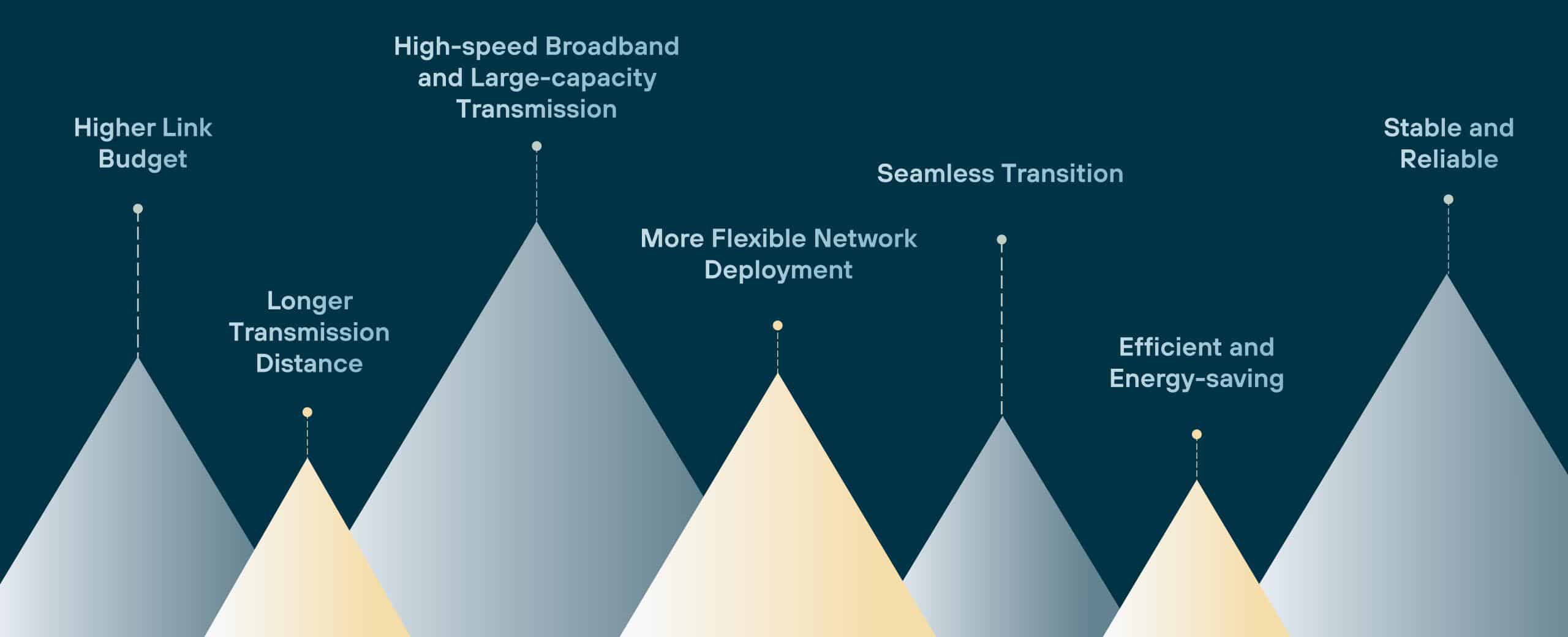
Blog Discover How ATOP’s XGS PON OLT E2 and XGS Combo PON OLT Class D Help Enhance Sustainability
Discover How ATOP's XGS PON OLT E2 and XGS Combo PON OLT Class D Help Enhance Sustainability
As the application of gigabit broadband worldwide gradually improves, the demand for gigabit connectivity is growing, leading to an increase in the number of users requiring this high-speed service. According to data from Omdia, the number of gigabit broadband users worldwide had exceeded 150 million by the end of 2022, and it will exceed 400 million by 2027. With the rapid development of gigabit broadband users, the demand for high link budget products in the optical communication market is also increasing. ATOP’s XGS PON OLT E2 and XGS Combo PON OLT Class D belong to the latest generation of fiber-optic communication modules that adopt SOA semiconductor optical amplifier technology. This technology overcomes the power limitations of traditional lasers, resulting in improved link budget, wider network coverage, more stable transmission quality, and increased terminal connections.

ATOP has successfully deployed its XGS PON OLT E2 and XGS Combo PON OLT Class D in numerous international broadband access projects. The XGS PON OLT E2 optical module is ideal for new fiber access networks, while the XGS Combo PON OLT optical module caters to the requirements of traditional GPON and new XGS PON mixed fiber access networks. They have significant advantages in broadband access scenarios, including:

• Higher link budget:
They have a significant advantage in optical transmission power and receiver sensitivity, with the XGS PON OLT E2’s optical transmission power reaching +8~+11dBm and receiver sensitivity reaching -33.5dBm. A higher network link budget means that more terminal devices can be connected under the same network conditions, making the network more stable and reliable. This is particularly important for high-bandwidth and high-QoS-demanding applications such as 4K/8K video, AR/VR, real-time control, and mobile backhaul.• Longer transmission distance:
They have a longer transmission distance, which allows the network to cover a wider range, reaching over 20 kilometers and meeting the broadband access needs of users in remote areas. High-speed broadband and large-capacity transmission: The XGS PON OLT E2 provides symmetrical 10G transmission rates in both upstream and downstream directions, making it ideal for meeting the demands of high-capacity data transmission in various scenarios. These scenarios include remote work, ultra-high-definition video streaming (4K/8K), AR/VR applications, 5G/6G mobile communication, smart city, autonomous driving, remote medical care and so on.• More flexible network deployment:
They support various network deployment methods, such as deployment in first-level or second-level splitter networks, providing the flexibility to plan and deploy networks according to the specific conditions of different regions.• Seamless transition:
The XGS Combo PON OLT Class D supports mixed networking of 10G symmetric transmission rates and 2.5G/1.25G rates. The module facilitates the coexistence of 10G PON and traditional GPON on the same PON through the use of wavelength division technology. This ensures a seamless transition from GPON to 10G PON while preserving the existing ODN and protecting the operator’s investment.• Efficient and energy-saving:
The XGS PON OLT E2’s power consumption is less than 2W, and the XGS Combo PON OLT Class D’s power consumption is less than 2.5W. They adopt green energy technology and environmentally friendly design, providing excellent energy-saving performance and significantly reducing energy consumption, thereby saving costs.• Stable and reliable:
They adopt the highest quality optical components, which have outstanding stability and reliability. The laser’s lifespan can reach 80 years, and the modules have passed mechanical integrity tests, durability tests, electromagnetic compatibility tests, and special tests, ensuring continuous and reliable operation and providing stable network transmission services.• High-quality international certification:
They have passed numerous international certifications, including CE, FCC, and RoHS certifications. What are the applicable scenarios for these two products, and what are their potential for scalability?
In an operator scenario, they can provide faster and more reliable internet services, meeting users’ demands for high bandwidth and low latency. Additionally, XGS Combo PON OLT Class D supports both GPON and XGS PON, and has high scalability, adapting to different network environments and needs. It can flexibly deploy and expand networks to support the growing demand for bandwidth, bringing greater business opportunities to operators. They can meet the high-speed network transmission needs of enterprises and governmental and public institutions for multimedia applications, video conferencing, remote education, medical diagnosis, and so on.
In summary, ATOP’s XGS PON OLT E2 and XGS Combo PON OLT Class D can provide efficient fiber access solutions in various application scenarios, helping customers reduce operating costs, improve network efficiency and reliability, and enhance user experience. ATOP is committed to providing customers with the most advanced communication technology and high-quality services, making your network faster, more stable, and more secure! If you are looking for high-quality optical transceivers to meet your broadband access network needs, whether you are an operator, enterprise, or public institution, XGS PON OLT E2 and XGS Combo PON OLT Class D will bring higher efficiency and better performance to your business!
Share this news
Related News

Get in touch to learn more
© ATOP Corporation.

